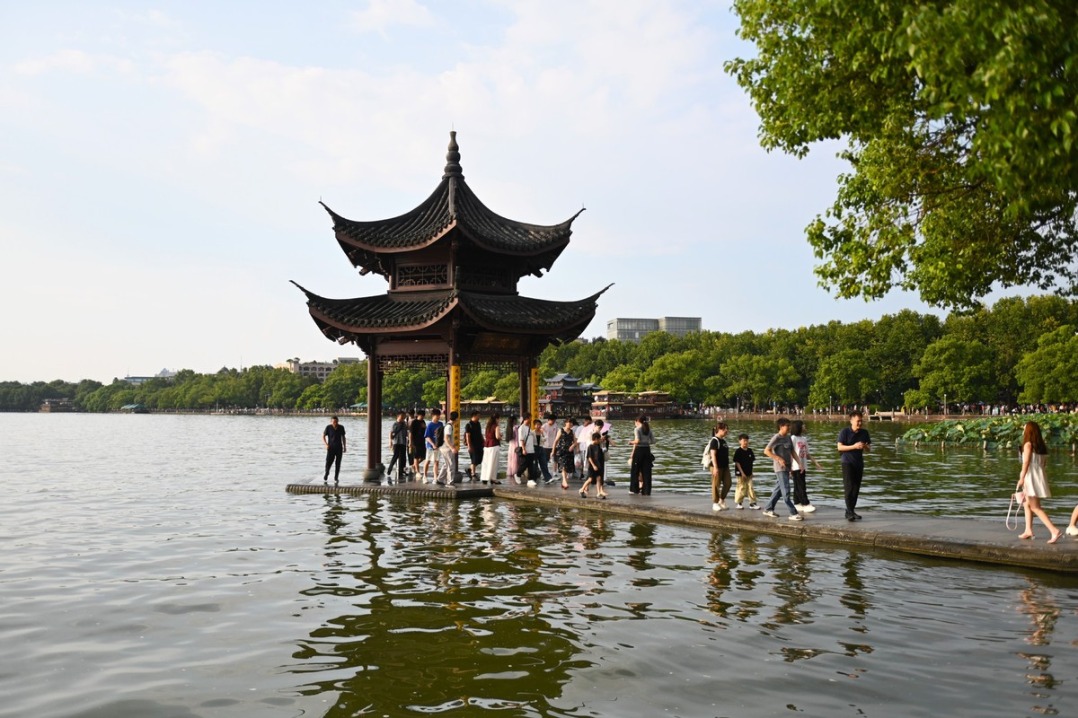A rising sense of class

Foreign spirits producers are eyeing more Chinese who enjoy the 'spiritual consumption' of whiskeys
As the anti-corruption campaign and austerity policies continue in China, sales of imported spirits are slumping. However, Western spirits producers remain optimistic about the future of the market, and are shifting their focus from high-end drinkers to young Chinese born after 1980 and the country's growing middle class.
Cognac shipments to China dropped 17.4 percent in 2014, according to a report released by the Bureau National Interprofessionel du Cognac. The Scotch Whisky Association said on April 1 that direct exports to China fell 23 percent to 39 million pounds in value in 2014. Whiskey shipments to the hub of Singapore fell from 329 million pounds in 2013 to 201 million pounds in 2014. Most shipped to Singapore are distributed to China.
| Western spirits producers remain optimistic about the future of the Chinese market. Provided to China Daily |
While the overall future for the spirits market, which used to be dominated by luxury categories, appears bleak, the market for individuals and young people is poised to take off. Single malt whisky is one of those markets. This year, the world's largest spirits producer, Diageo, will launch two types of single malt whisky, and William Grant & Sons will enter at least five different types into the Chinese market.
Li Rougang, founder of China Single Malt Club, says the demand for single malt whisky has been increasing for years. In 2006, he imported only 150 cases to China, while last year the number rocketed up to 5,000 cases, or about 30,000 bottles. Li expects that number to double this year.
"Single malt whisky has been positioned as a category for individuals since it was introduced to China years ago. The category is free from the influence of government policies," says Zhu Feng, chief editor of the Chinese version of Whisky Magazine.
Drinking whiskey is seen in China as a kind of "spiritual consumption" among young people, Zhu says. It's common for a 30-year-old man earning a salary of 10,000 yuan a month to buy one or two bottles of whiskey priced at around 600 yuan to 1,000 yuan ($97 to $161) per bottle, he says.
The various tastes and culture behind the drinks intrigue those who want to be different from others and, in the meantime, are in pursuit of good taste and quality.
Lin Xiao, an accountant at an investment company, says he used to drink whiskey with a green tea beverage, which is common among new Chinese drinkers. But he's since stopped and learned to appreciate the taste while drinking whiskey with close friends. He introduced whiskeys to family relatives during the last Spring Festival holiday.
"It's easy to for young people to pick up knowledge of whiskies online. The booming e-commerce in China makes whiskeys accessible everywhere, even to people in rural areas," he adds.
On JD.com, one of the biggest online retailers in China, more than 53,000 bottles of a Chivas Regal whiskey produced in 2012 have been sold over the last two years. The whisky is priced at 239 yuan per bottle.
Unlike their parents' generation - who mainly consume baijiu, the most popular spirit in China - young people in their early 30s and 20s developed their knowledge of spirits at bars, KTV and trendy restaurants, where foreign spirits are easier to find, Zhu says.
"The future market is promising, I'm quite sure," he says.
Cognac, which was among the first spirits introduced to China as early as the 19th century, accounts for a large part of the imported spirits market in China. Its sales has returned to normal after years of increasing in bottles and prices driven by Chinese consumers' "abnormal mindset", experts say.
Maurice-Richard Hennessy, who belongs to the eighth generation of the Hennessy family, says many Chinese visiting his hometown of Cognac in France are starting to sip cognac and enjoy the liquor instead of downing cups of it in one go.
"It's interesting that now many Chinese people visiting vineyards in Cognac are willing to know how the wines are made and appreciate the craft instead of just buying some bottles," says Hennessy, adding that the number of Chinese visitors to Cognac rises every year.
Fan Tinglue, a wine expert, says Chinese drinkers used to only care about the vintage and price of foreign spirits such as cognac. They wanted to prove they were rich enough to have luxury cognac, and few thought about the taste or the way they drank it.
"Cognac consumers are rational. They understand how to appreciate a good bottle just like Western consumers. From this aspect, the government's austerity policies have helped to form a healthy spirits market," says Fan.
Spirits producers have gradually adapted to the changing market over the past two years. Most are active in introducing mid-level priced spirits to their new targeted group - China's booming middle class.
One of the three biggest spirits producers, Pernod Ricard, released a type of cognac this year that costs around 500 yuan. It is aimed at the middle class market and selling well, says Fan.
Dadong, a high-end restaurant chain known for its roast duck, now features single malt whisky on its menu. Restaurants run by hotel brands Shangri-La and Hyatt have lowered their prices by replacing their expensive wines with middle-level-priced ones. With the expansion of China's middle class, foreign spirits will be positioned as more of a family drink, following a similar trend in the US, Fan says.
Chinese consumers are learning to drink quietly at home instead of showing off on social networks or in public. Also, frequent news reports about adulterated white spirits made by Chinese producers will help push Chinese consumers in the direction of foreign alcohol brands, Fan says.
"The young generation and rising middle class will be more open to foreign spirits. The potential room for producers is big because the types of spirits they introduce to China now are still a small part of their portfolio."
dengzhangyu@chinadaily.com.cn
(China Daily Africa Weekly 04/24/2015 page24)































